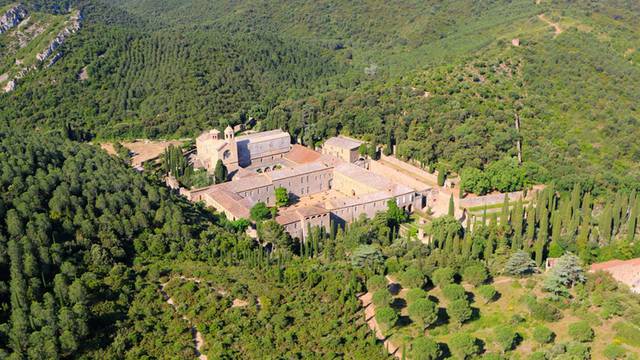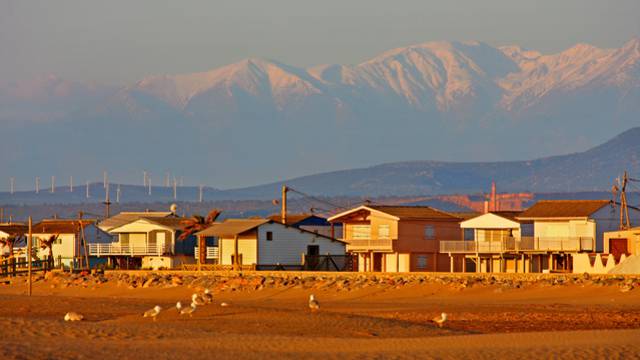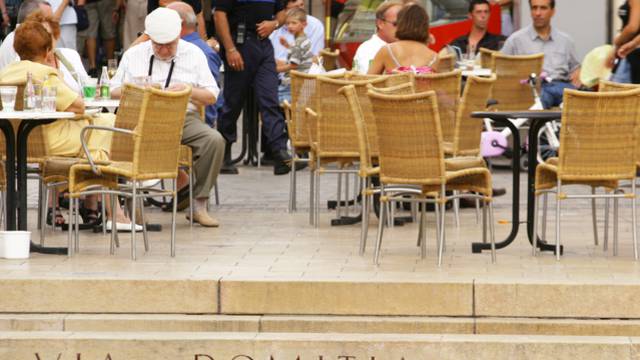History
Founded in 1093, Fontfroide Abbey became affiliated with the Cistercian Order in 1145, and quickly acquired a strong influence reaching Catalonia, where Poblet Abbey was founded in 1151. In 1203, Pope Innocent III ordered two monks from Fontfroide to preach against heretical Catharism. However, one of these papal representatives, Pierre de Castelnau, was killed, which led to the Albigensian Crusade in 1209. Another monk and abbot from Fontfroide distinguished himself at the end of the 13th century: Jacques Fournier, elected the Pope of Avignon under the name Benedict XII, built the Papal Palace in Avignon. In 1348, the Black Death reached the monastic community. The Abbey fell into disrepair from the 15th century, losing its title as "abbey" in 1764. It was stripped bare at the start of the 19th century, before the cloister, chapter house and church were classed as historic monuments in 1843. In 1908, Madeleine and Gustave Fayet bought the Abbey from an American buyer. They moved in, restoring and decorating the building, and built an artistic and bustling reception area.
Things to explore
As you walk

Water
Water is a fundamental element in Fontfroide. 'Fons Frigidus' in Latin, and 'Fontfreda' in Occitan: Fontfroide was named after a fresh water spring, which can be seen in the small wells in the Louis XIV courtyard. As with all Cistercian monasteries, water is a vital element, shown by the simple waterleaf on the capitals. Numerous streams gurgle in the mountains. Near to Castellas, three channels are still visible: this small constructions potentially show how water was collected from the 3 springs that supplied Narbonne between the 16th and 19th centuries.

Fontfroide Mountains
From afar, the dark green undergrowth contrasts with the blinding white limestone. However, in the paths weaving through the mountains, the Mediterranean landscape is adorned with bright colours. At the end of the path is the rare fumewort flower, with its tubular white and purple blooms. The buzz of honeybees fills the air, as they create the famous Montseret honey. This protected nature reserve is home to very rare species, such as the endangered 'psammodrome algire', a small reptile that can only be found in a few areas in the Midi region. Sometimes, you can see a Montagu's harrier soaring above the beautiful landscape. Far away, the blue coast and Narbonne faces into the wind.

Cross of Fontfroide
A small staircase leads to a garden, then a path opens up onto the fragrant heath. The gentle incline passes in front of a watchtower, overlooking the vineyards of Fontfroide, and climbs to the summit, where a cross, once made of wood, was placed in 1858 to mark the place where the monks finally returned.

Experience:Heritage, Nature and Serenity at Fontfroide Abbey
Explore the mountains and abbey of Fontfroide for a timeless experience. Plunge into 1,000 years of history. Recharge your batteries in the heart of an unspoilt wilderness. Take time out on a spring day. Succumb to the charm of magnificent Fontfroide! (Find out more).
About

The Regional Natural Park
The Regional Natural Park in the 'Narbonnaise en Méditerranée' area contains some of the most well-preserved landscapes in the Mediterranean. It's a mosaic of blue, green, white and orange countryside covering over 70,000 hectares of lagoons, heathland, and canal beaches. With a collection of outstanding natural sites, from the Clape mountains to the Isle of Saint Lucie, from the coastline to inside the earth, the Park has a wonderful diversity of flora and fauna. This is where fishermen, salt merchants and wine-growers came to develop their industry and turn these fragile ecosystems into living, growing spaces. In order to understand the construction and development of this area, the Maison de la Clape in Vinassan has a 4D reconstruction that takes the visitor on a journey through time: 'The Narbonnaise between earth and water'...

Lakes and islands
1200 hectares between the earth and sea form the heart of the 'Narbonnaise en Méditerranée' Park, which includes the Lakes of Bages-Siegan and Peyriac, the Isle of Saint Lucie and the Isle of Saint Martin. These lagoons are 'wetlands of international importance', and contain one of the most diverse fauna in Europe. This place is a paradise for both ornithologists and nature lovers alike, where you can see flamingos, egrets, kingfishers and wagtails. Eel fishers continue to practise their ancient craft, and salt manufacturing has left its geometric marks. Islands break up the watery landscape with their height and heady perfumes. On the horizon is the Corbières, the peak of Canigou, and somewhere on the plain, Narbonne Cathedral.

The coast
42km of sandy beach for bathers and sailing lovers... Gruissan alone can summarise the diversity of the area: the lively beaches and party atmosphere of holiday makers lies side-by-side with a peaceful village perched above a lake where fishermen cradle their brightly-coloured lines. The Clape mountains are reflected in the water, which is a home to pink flamingos. The Clape contains 800 hectares of protected countryside, including hills, valleys, heathland and vineyards. The Leucate plateau is another remarkable landscape: almond trees and dry stone walls protect little vineyards and orchards. The plateau finishes somewhat abruptly, with a white cliff plunging into the sea (find out more).

Narbonne
Alone on the plain overlooking the sea, Narbonne is a proud 'daughter of Rome'. 'Narbo Martius' developed throughout Antiquity along the Via Domitia, which still runs through it. Its archaeology museum, in the magnificent Archbishops' Palace, displays one of the richest collections in France, notably its Roman mural paintings. The group of buildings including the Cathedral and the Archbishops' Palace dominate the square that leads to the designated 'ramblas' along the Robine Canal. Wander along the banks of the canal, quench your thirst in the terrace of a café, whilst listening to a song by Charles Trénet... why not! (Find out more).

Gustave Fayet et Madeleine Fayet-d’Andoque came to Fontfroide with their family in 1908. This was a period where various artists were creating a new style of art, far from Paris, and were leaving to work in the Midi of France. Gustave Fayet, the inheritor of a wine fortune, collected modern art: Gaughin, Van Gogh, Cézanne, Matisse… he had good taste. He didn't hesitate in inviting artists and musicians to Fontfroide, who nicknamed themselves the 'Fontfroidiens' Odilon Redon created many paintings and pastels, and a monumental masterpiece: the panels of 'Jour' and 'Nuit' that adorn the library. Ricardo Vines, the piano virtuoso admired immensely by Debussy, would play Ravel on the library's piano... In Bièvres, not far from the house of Odilon Redon in Paris, the artist Burghstal created the stained-glass windows of the abbey in Verrerie des Sablons, that the Fayet couple had specially built.































